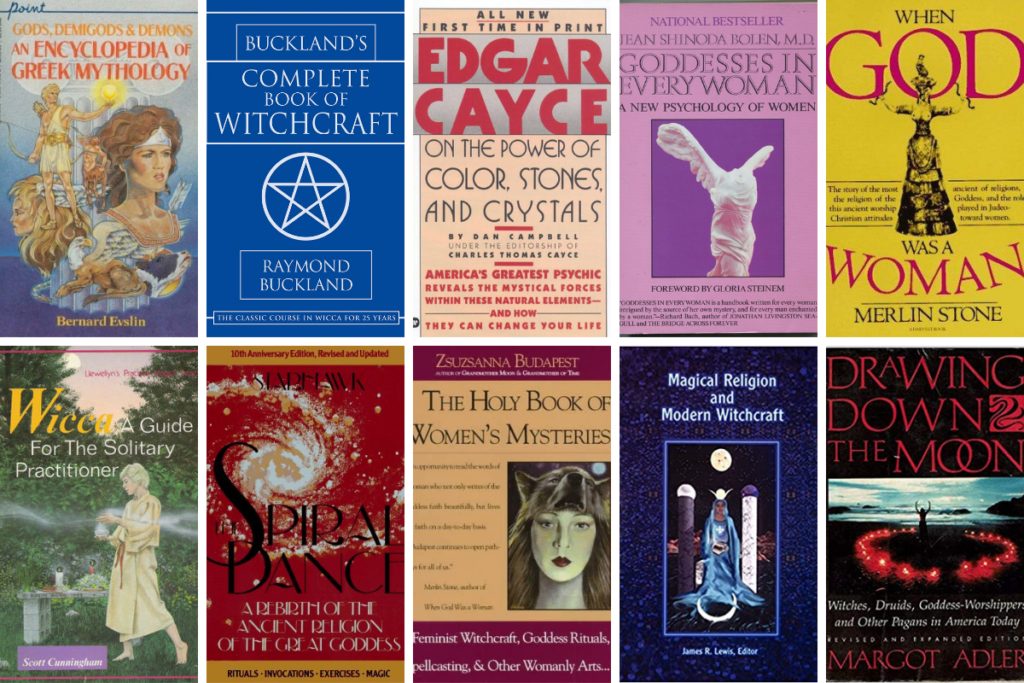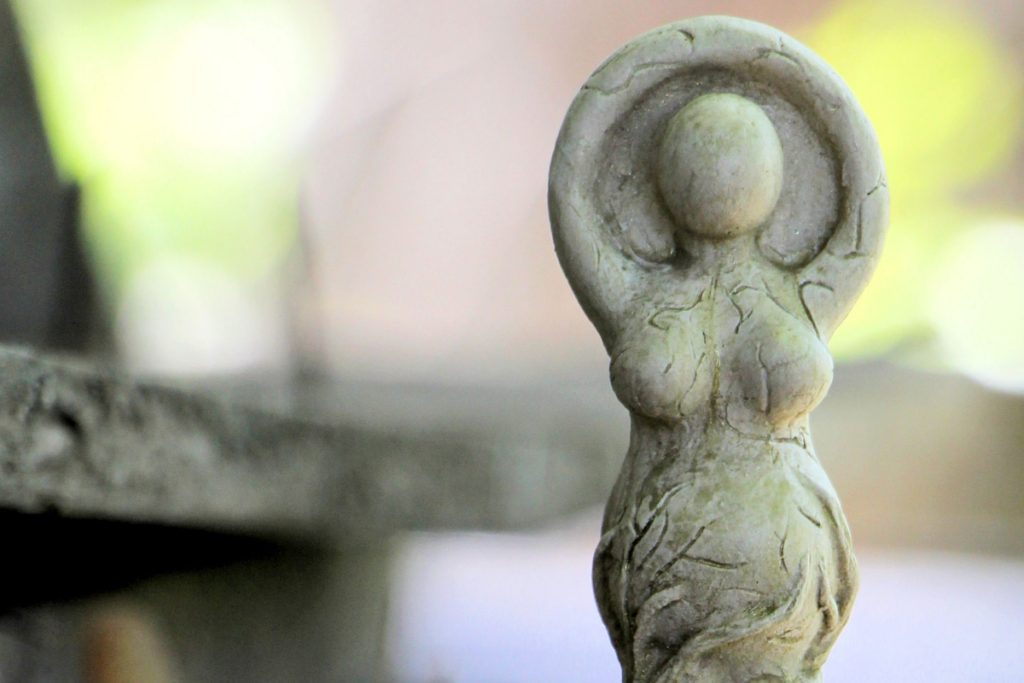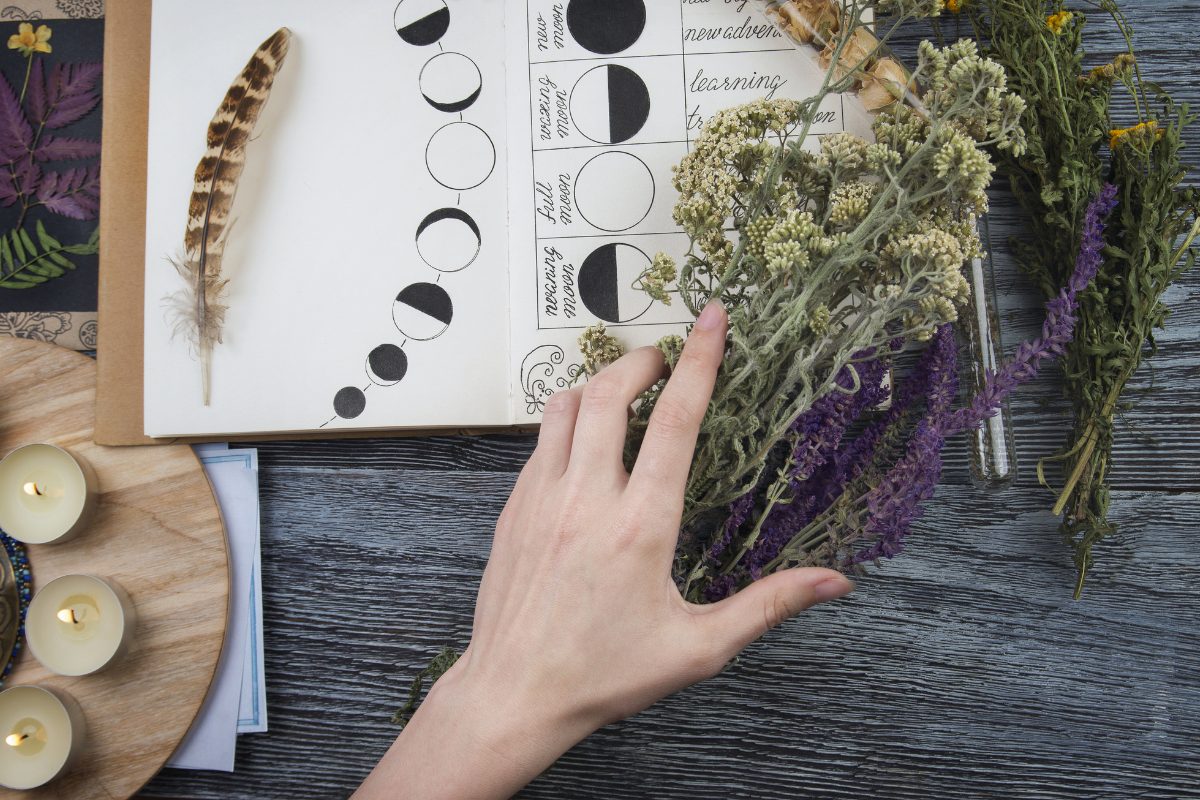Fourteen years ago, I became a Wiccan Priestess. Today is the anniversary of my initiation into the Georgian Tradition of Wicca.
I didn’t intend to become a Georgian Wiccan. I was calling myself a Wiccan years before I met my coven. I’m a product of 1990s Wicca, of the kind of Wicca popularised by Scott Cunningham and Silver RavenWolf, the type that exploded into the mainstream with the release of The Craft in 1996. I was 18 that year, a first-year university student.
My Pagan education began years before. I rejected the Roman Catholic Church early. At the age of nine, I had my First Communion in June 1987 and told my parents I didn’t want to continue. I don’t remember much about catechesis. I remember the church building, the hall with the ping pong tables and vending machines, and the classrooms, vague images of nuns and teachers, but not a lot about the classes themselves. If there’s one thing I remember clearly was my objection to the idea that a woman is subordinate to a man. Although my parents had a traditional, conservative marriage, they valued education and independence, and that wasn’t jiving with what the Church was trying to teach me.
There were two highlights of catechesis Saturday that continued even after I stopped going to Church. The first was visiting my great-aunt. She lived near the Church and always made lunch for my mom and me. Her son, my father’s cousin, showed me his books and talked to me about authors he loved.
The second highlight was going into The Bargain Box, a thrift store that was (and still is) across from the Church. While my mother browsed clothes and bric-a-brac, I looked at the books. My mother always gave me money for books, and the day I found Buckland’s Complete Book of Witchcraft was no exception. It was a beat-up copy full of handwritten notes. I don’t remember how old I was other than too young, and I wonder if my mom would have bought it for me if she knew English and would have thumbed through it. She bought me an Ouija board one Christmas, so it’s hard to say.
The books that shaped my Paganism
Here are the books that shaped my early Paganism. I don’t know if I would recommend these titles today. I haven’t revisited them in years, and they may be very dated, especially in light of how Pagan publishing has exploded over the last 25 years.
Gods, Demigods & Demons: An Encyclopedia of Greek Mythology by Bernard Evslin
I mentioned this little book recently in my introduction to Hecate. I bought this little book through a Scholastic Book Clubs flyer when I was about 12. I had already turned my back on the Church, but I didn’t know what else was out there until I read this book. For the first time, I realised that there was another way to understand and approach deity. I was hooked.
Buckland’s Complete Book of Witchcraft by Raymond Buckland
I can’t imagine that I understood anything in this book when my mother bought it for me, but I know I studied it. The book’s previous owner had completed the examination questions. I remember using correction fluid to cover them and write my answers. Like the illustrations of the initiation binding and Witches’ Cradle, some of the images are burned in my memory.
Years later, a girl started walking through the halls of our high school with Buckland’s Blue Book, holding it with the cover facing out so that everyone could see it and loudly identifying herself as Wicca. I didn’t engage with her about it. Witchcraft was a tiny seed inside me in those years, and I wasn’t yet ready to talk about it.
Edgar Cayce on the Power of Color, Stones and Crystals by Edgar Cayce
This book also came from the thrift store. I don’t remember anything about it, and it’s no longer in my library. It must have impacted me because I wore a tumbled Tigers Eye pendant around my neck for years during my adolescence.
Goddesses In Everywoman: A New Psychology Of Women by Jean Shinoda Bolen
I first learned about Freud, Jung, and archetypes in a high school English elective called Contemporary Literature. When I told my teacher that I wanted to write a paper on female literary characters and archetypes for an assignment, budding feminist that I was, she loaned me this book. My essay was brilliant, by the way.
When God Was a Woman by Merlin Stone
I don’t know how I came across this book, maybe the thrift store. Evslin’s little encyclopedia of Greek mythology had been a revelation; Stone’s book was a revolution and helped turn me into a feminist rabble-rouser. This book was a game-changer, and it ignited my lifelong love affair with the Minoan Snake Goddess depicted on the cover.

Wicca: A Guide for the Solitary Practitioner by Scott Cunningham
Again, I don’t remember how I acquired this book, but I devoured it. I read it multiple times. When we find the book, the group, the teacher that gives a name to this body of ideas that we’ve carried around with us, we often describe the experience as coming home. That’s what Cunningham’s book was for me.
The Spiral Dance by Starhawk
The Spiral Dance was one of two books I picked up at a weekly used books market on my university campus. By then, I had acquired a few tools and a small altar in my dorm room. Buckland and Cunningham had given me that foundation, but Starhawk married Wicca with feminism and ecology, and her poetic work spoke to me deeply.
The Holy Book of Women’s Mysteries by Zsuzsanna Budapest
I picked this book up along with The Spiral Dance. As a riot grrrl of the mid-1990s and a student pursuing a second major in Women’s Studies, The Holy Book of Women’s Mysteries became a critical text in my education on feminist witchcraft.
Magical and Modern Witchcraft by James R. Lewis
In the fall of 1996, I took Witchcraft and Paganism in America, a course that still appears to be on offer at the University of South Florida. Magical and Modern Witchcraft was the first of two class textbooks. It’s an anthology that introduced me to the work of Judy Harrow, Oberon (listed as Otter in the book) and Morning Glory Zell-Ravenheart and academic Pagans Sabina Magliocco and Chas Clifton.
In addition to introducing me to these figures, Magical and Modern Witchcraft was vital because it, and this class, lent legitimacy to what I had come to see as my religion. Here were Paganism and Witchcraft as serious subjects worthy of academic study.
Drawing Down the Moon by Margot Adler
Adler’s was the second textbook in the course. This sociological study of contemporary Paganism in the United States opened my little world. I knew Pagans were out there, but after reading Drawing Down the Moon, it felt like they were everywhere, and it would only be a matter of time before I found them.

Finding community
I did find them, a variety of them. By the late 1990s, Pagans and Witches were everywhere. The Witches’ Voice, founded in 1997, became the most important online information and networking resource, and Yahoo! GeoCities sites flourished. In the early 2000s, we saw the launch of Meetup and MySpace. It became more accessible than ever to find increasingly public Pagans, and, in Miami, it felt safe to meet them.
I went to open events, attended a class or two and some rituals at Moonpath CUUPs, circled a few times with the Circle of Isis Rising, a popular coven in Miami in those days. I made like-minded friends with who I studied and practised informally. And, of course, I kept reading.
In a Yahoo! Group of people looking to meet Reclaiming Witches in South Florida or establish the tradition there, I met a woman in a coven. I joined that coven less than a year later at Imbolc in 2006. I was 28. It’s was, and still is, an eclectic coven of peers, but its founders are Georgian Wiccan Elders, and the following year, on 12 November 2007, I was initiated. Over the next five years, I was elevated to the Second and Third Degrees.
Georgian Wicca is a form of what is now called Traditional Wicca. That is, it is lineaged and initiatory. Georgian Wicca was founded in 1970 by George Patterson, Zanoni Silverknife and Tanith in Bakersfield, CA. Every Georgian can trace their lineage to the Bakersfield coven. Our lore, our Book of Shadows, our rites, and our oaths unite us.
When I joined my coven, I also joined a broader community of Pagans and Witches. I’ve been able to meet, learn from, circle with, and become friends with people I read about in my university books.
My learning did not end there, of course. This month, I will enter my 44th year in this life, and I remain a rebellious student.


1 thought on “The bookish journey of a Wiccan Priestess”